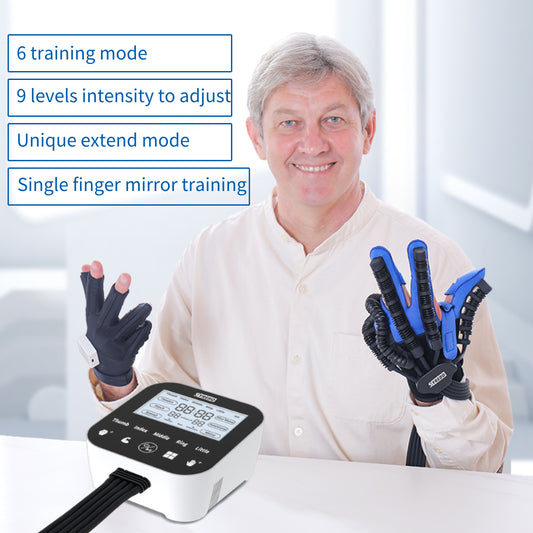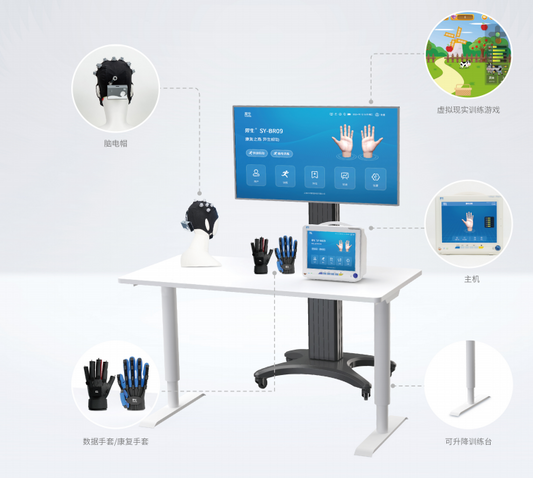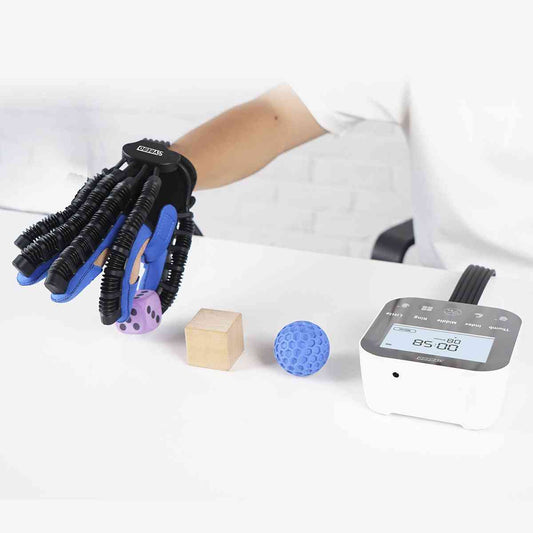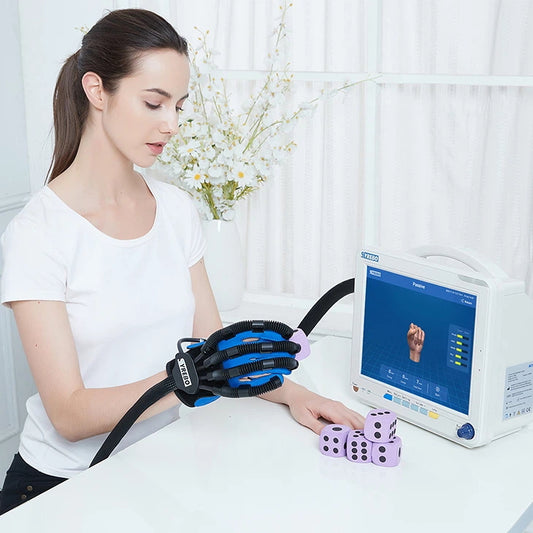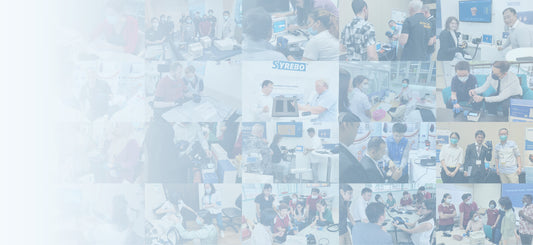Understanding a Clenched Hand : How to Treat Hand Spasticity
Spasticity is a common secondary symptom after a stroke and can result in stiff or tight muscles. For many survivors, spasticity affects the arms and hands, often resulting in tight hands or curled fingers after a stroke. This severe hand spasm is due to a miscommunication between the brain and the muscles, causing the muscles that control the hand to spasm and gradually tighten.
Fortunately, there are ways to rewire the brain and restore mobility to the hand and fingers. In this article, we will discuss the causes and treatments for severe hand spasms and finger curls after a stroke.
The General Aspects of Spasticity in The Hand
- Muscles look stiff because the damaged part of the brain is sending incorrect signals to the muscles.
- When a muscle is affected by spasticity, the faster it moves, the stiffer the limb looks.
- Spasticity is seen in a number of different conditions, including cerebral palsy, traumatic brain injury, spinal cord injury, stroke, and multiple sclerosis.
- People may have difficulty moving from one position to another.
How to Prevent Spasticity in the Hand from Worsening
Acquired non-use is a phenomenon that occurs when a person neglects their limb and the brain begins to detach or separate from that limb. Learned non-use often occurs after a stroke as a result of the brain's attempts to compensate for lost function and become more efficient. However, this learned compensation can lead to decreased use of the affected limb, which can make recovery slower and more difficult.
After a stroke, it may feel easier to compensate for decreased function by using only the more efficient, unaffected limb. However, if you don't use or move your hand, or at least consciously stretch it every day, then your hand will continue to lose function and your fingers will continue to curl toward the palm.
Causes of a Clenched Hand and Curled Fingers After Stroke
The brain and nervous system constantly communicate with the muscles, telling them when to move and when to relax. If a stroke damages areas of the brain that control hand function, such as the motor cortex, it disrupts the communication between the hand and the nervous system. As a result, the hand muscles contract or spasm involuntarily.
This spasm and reduction in voluntary (intentional) movement can prevent full movement of the wrist, hand, and fingers. Over time, spasticity can lead to curling of the fingers after a stroke and, if left untreated, can lead to the development of contractures.
Contractures are characterized by extreme stiffness or shortening of muscles, joints, and connective tissue. Once a contracture occurs, the range of motion of the fingers and wrist is limited, causing the fingers to curl into the palm of the hand.
It is important to control spasticity early to prevent contractures from occurring. This will help maximize function and avoid the pain or discomfort associated with contractures. However, even if the spasm has progressed to contracture, there are still ways to relax the muscles of the hand and fingers, although this will take time and persistence.
Learn more about hand spasticity.
4 General Spasticity Treatment Options
1. Hand Splints
Daily stretching is critical for patients with clenched hands and curled fingers after a stroke. Stretching can be optimized through the use of hand splints, as these devices provide long, low-load stretches for the muscles and joints of the hands and fingers.
If a person's hands are clenched all day, the muscles begin to shorten, causing them to become very tight. If the hand is left in a tight grip for a long period of time without being stretched, it can lead to contractures. Contractures can be very painful and may require surgery to release. To prevent contractures, it is important to stretch the muscles. Syrebo offers a variety of hand orthoses for stroke rehabilitation, depending on the level of hand movement.
Check out the high quality hand splints we offer for you!
2. Electrical Stimulation
Electrical stimulation through electrodes placed on the skin sends input signals to specific muscles and causes them to contract. For example, when electrical stimulation is applied to the forearm, it can help to stretch the fingers, causing them to spread out from the palm of the hand.
Electrical stimulation works best when combined with therapeutic hand exercises to provide as much stimulation to the brain as possible. While using electrical stimulation to stretch the fingers is certainly helpful, it is even better to consciously try to stretch the fingers during the exercise. Conscious movement is the key to activating neuroplasticity and improving hand spasticity after a stroke.
3. Hand Therapy Exercise Devices
Your therapist will provide you with a home hand exercise program for you to practice on your own in between treatments to maintain neuroplasticity. This requires motivation and responsibility to maximize recovery. However, studies have shown that traditional home exercise programs tend to have low compliance rates.
This is where interactive hand therapy equipment can help. The Syrebo Hand Rehabilitation Glove, for example, Rehabilitation Robot Gloves that tracks your movements as you synchronize your hand workout with a music game. It's fun and motivating to use, and it's FDA-approved and clinically proven to improve hand function within two weeks of use. Survivors of manual clenching may need to use the device passively to complete the exercises, but this still stimulates neuroplasticity and promotes improvements in spasticity and overall hand function.
4. Stroke Rehabilitation Exercise
When you repeat an action often, such as these hand exercises, it prompts the brain to build and strengthen neural connections that make future actions easier.
The brain responds to stimuli, especially highly repetitive and specific stimuli. When you repeat hand exercises every day, it tells the brain that hand function is important. In response, the brain strengthens those pathways that control hand function to make it more efficient.
- Palm Up and Down
This motion, known as pronation (palm down) and supination (palm up), is important for dressing, carrying objects, and turning doorknobs. For this therapeutic hand exercise, place your hand palm-down on a table. Then, use your non-affected hand to turn your palm up. Repeat: palm up, palm down for a total of 20 repetitions.
- Wrist Flexion and Extension
For the next exercise, gently bring movement into the wrist. While keeping your elbow on the table, place your non-affected hand on the palm rather than the fingers to stretch your affected hand at the wrist. Stretch backward, then forward. Perform this movement slowly and in a pain-free range.
- Wrist-side Side Movement
This side-to-side wrist movement is called ulnar deviation (towards the pinky) and radial deviation (towards the thumb). It’s not a common movement done in isolation but is critical for getting your wrist or hand into the right positions for a variety of tasks like grasping, lifting, and writing. This is the last level 1 hand exercise for stroke patients.
Place your affected hand on the table with your palm down. Then, use your non-affected hand to slide your hand to the left, then to the right. Repeat slowly, side to side, like a windshield wiper, 20 times.
By performing these stroke-friendly hand exercises daily, you will be able to improve your hand mobility and function. Don't be discouraged if recovery is slow, as improved hand mobility takes time and persistence.
Although some problems will be permanent, many people who do rehabilitation with Rehabilitation Robot Gloves and hand splints can regain some or many of the abilities lost during the stroke. If you need or want to know more. Feel free to consult us anytime.


